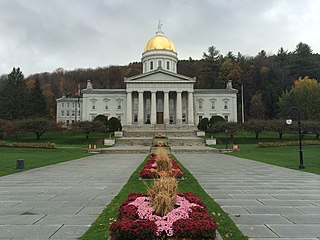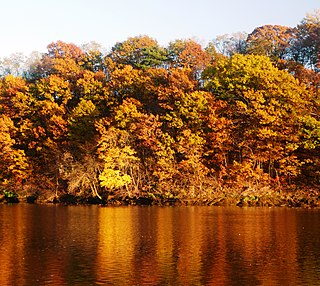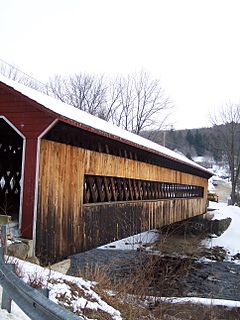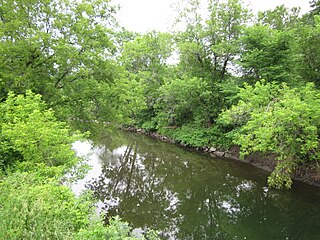The Jail Branch River is a river in central Vermont. It is a tributary of the Stevens Branch of the Winooski River and part of the Lake Champlain watershed.

A river is a natural flowing watercourse, usually freshwater, flowing towards an ocean, sea, lake or another river. In some cases a river flows into the ground and becomes dry at the end of its course without reaching another body of water. Small rivers can be referred to using names such as stream, creek, brook, rivulet, and rill. There are no official definitions for the generic term river as applied to geographic features, although in some countries or communities a stream is defined by its size. Many names for small rivers are specific to geographic location; examples are "run" in some parts of the United States, "burn" in Scotland and northeast England, and "beck" in northern England. Sometimes a river is defined as being larger than a creek, but not always: the language is vague.
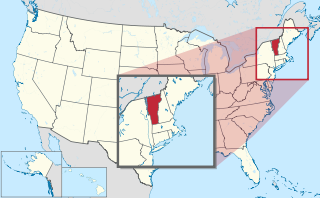
Vermont is a state in the New England region of the northeastern United States. It borders the U.S. states of Massachusetts to the south, New Hampshire to the east, New York to the west, and the Canadian province of Quebec to the north. Vermont is the second-smallest by population and the sixth-smallest by area of the 50 U.S. states. The state capital is Montpelier, the least populous state capital in the United States. The most populous city, Burlington, is the least populous city to be the most populous city in a state. As of 2019, Vermont was the leading producer of maple syrup in the United States. In crime statistics, it was ranked since 2016 as the safest state in the country.

The Winooski River is a tributary of Lake Champlain, approximately 90 miles (145 km) long, in the northern half of Vermont. Although not Vermont's longest river, it is one of the state's most significant, forming a major valley way from Lake Champlain through the Green Mountains towards the Connecticut River valley.
Contents
The Jail Branch is a 16-mile-long river that rises in Washington, Vermont, and flows north into Orange, where it comes under the influence of the state of Vermont's East Barre Dam. [1] Orange Brook and its tributaries Baker Brook, Nelson Brook, and Nate Smith Brook enter the Jail Branch before it flows into Barre. Turning northwest, the river passes through East Barre; Honey Brook and its tributaries enter from the north before it descends through a narrow valley to the center of Barre, where it enters the Stevens Branch just south (upstream) of the downtown. The watershed area is 31,050 acres (12,570 ha). [1] The Jail Branch River supports a healthy wild brook trout population and has had few pollution problems in recent years. [2]
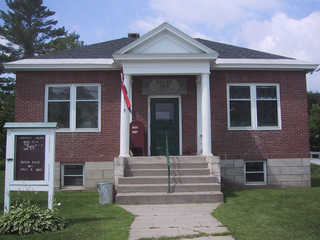
Washington is a town in Orange County, Vermont, in the United States. The population was 1,047 at the 2000 census. The town is believed to be named after George Washington, although the town may also be named after Washington, Connecticut as there are records of individuals moving from that town in Connecticut to Vermont around 1766.

Orange is a town in Orange County, Vermont, United States. The population was 965 at the 2000 census.
East Barre Dam is a dam in East Barre, Washington County, Vermont.
On May 26, 2005, the Jail Branch was the site of the drowning of three children, whose bodies were found in Barre at 5:45 a.m. local time. The drowning was attributed to the steep riverbank, which could have caused the children to slip and fall into the river.[ citation needed ]

Drowning is defined as respiratory impairment as a result of being in or under a liquid. Drowning typically occurs silently, with only a few people able to wave their hands or call for help. Symptoms following rescue may include breathing problems, vomiting, confusion, or unconsciousness. Occasionally symptoms may not appear until up to six hours afterwards. Drowning may be complicated by low body temperature, aspiration of vomit, or acute respiratory distress syndrome.
